This blog suffers from some silence, so I (Afuze) have started to think about guest writers. So, I asked if my Swedish friend, Decors, could write an info article about model horse breeding, which she hobbies with a long experience. She agreed, and here's the article for everyone to read! Thank you, Decors! (All the models and photos are hers.)
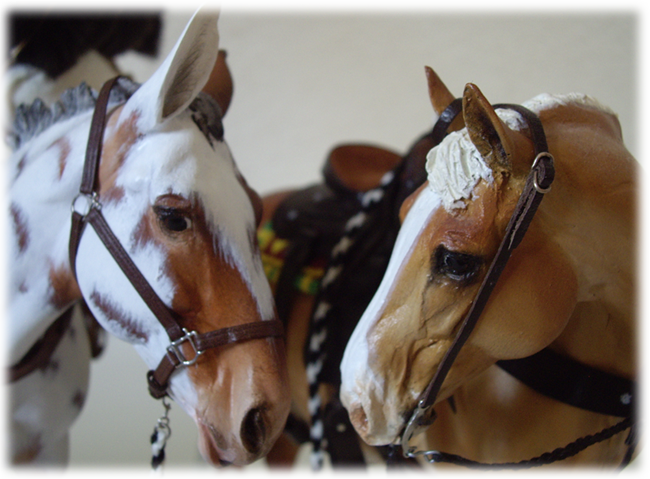 |
| Izadora D (mule mare) & Looks Like A Lady D (Swedish warmblood mare). |
Pedigree assignment is a cheap but very entertaining (and addictive) part of the model horse hobby that also can teach you many other things as you go, not just about different breeds, their special traits and history but about color genetics as well. It seems like many times model horse ‘breeders’ know more about the genetics than some real horse breeders. (Not always of course, but I've seen numerous examples of this).
For many non-hobbyists the Pedigree assignment part of the hobby is where they get confused even if they are accepting of the collecting part. Pieces of plastic can't breed right? Although us collectors can probably beg to differ since we know how models suddenly - out of nowhere I swear! - seem to multiply on the shelf and in cabinets. We didn't just buy ANOTHER model did we? No, nope - never! I don't know anything about that - move along...
The beginning...
We all have probably played “herd” or “family” with our models (or Hong Kong copy horses). One could say that pedigree assignment is like that but a step more towards realism than just “make believe”. As with many model horse things, pedigree assignment started in the USA, I've been told, around the late 1960-70ies. In Sweden (where I live) it was well established in the mid 1980's (but on a smaller scale). Due to the era of no internet, pedigree research (for real horses) was slower as it wasn't as easy to access to information as it is today. In the USA the lists of available sires and dams were offered by actual lists on paper from a model horse magazine (that was advertised in JAH) and you requested them by mail. A breeding fee of around 10 cents was often set for the right to use the horse/s (and you had to cover postage for a certificate back). A common source were also stud ads in horse magazines.
Most model horse collectors don't seem to see it as strange to name that piece of plastic you have on your shelf, nor to give an age, breed and gender to it - the latter being often the most easy and obvious part. Especially not if you regularly show your model at liveshows (and photoshows). Many times it's nicer, I think, to have a name to refer to rather than “third bay to the left, on the Giselle mold, released as GG Valentine”. But what about the next step? Giving your model horse a family as well? So letting your horse be a part of a family tree can be loads of fun. You can get started in one of two ways - or simply use both :)
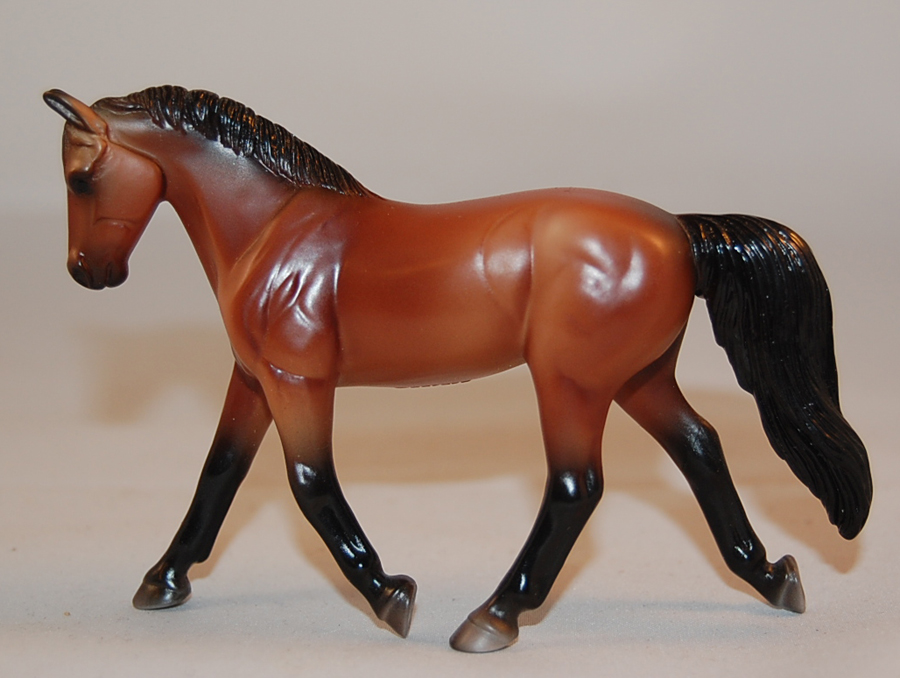 |
| Diantha D, a dutch warmblood mare. |
How-To - matchmaker, matchmaker make me a match
Here is a short little list that you can follow (if you like of course) when you add a pedigree to your model horse.
Determine the color
Assign the breed
Note the gender
Find a sire and a dam
Assign age
Put a name on it!
Determine the color
The most easy part. You look at the model if it's a OF or a readymade custom to be able to say what color the model is. If it's a blank resin or if you are planning to repaint the plastic model your options are more open. If you paint the model yourself, be sure to use good and clear reference pictures, especially when it comes to patterns like tobiano or appaloosa. Don't make things up and “invent” stuff. Take time doing research as people are more likely to want to use your models as parents for their own models. It's also good if you are planning to show the model on shows.
There are certain laws of genetics that apply to horse color and you should be familiar with the basics of these, so that you can choose parents that will be the most likely to produce a horse the color of your model. It is however NEVER a must to start out doing (and knowing) all of the genetic codes! However it can help to understand how some colors work and what can lay hidden only to pop up when that gene meets another hidden gene (ie a so-called recessive trait). An easy way to pick parents that fit to the color of your horse (ie ‘it's possible that these horses could be my horse's parents’.) is that your horse is of a color that one of its parents has.
Genetics are another of my favorite subjects so I won't go into depth on it here. But one that is easy to remember, chestnut + chestnut = always chestnut. If the (real) foal would come out in another color, the sire is wrong or one of the horses is masking its true color (like a silver bay).
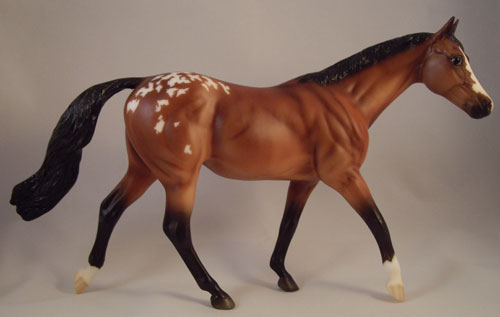 |
| Leo's Country Cat of Décorima, a pony cross (Swedish riding pony & British spotted pony) mare. |
Assign the breed
What about the breed then? Many times this is an easy box to check. When it comes to OFs (Breyer in this example) they are often released as a set breed. But what if you don't want to have your model as the breed it's released as - then you need to start to do some research.
Take the Newsworthy mold, and the model #9170 Connemara with loose mane (was also released with a braided mane) that was part of “Best of the British” series. The mold itself was made to look like Newsworthy (hence the name), that was a Welsh Pony/Thoroughbred cross. When I look at the model it is definitely a pony for me, but pretty open what type of pony it can be (a good thing!) The model was released as a Connemara but could go as a range of different british pony breeds. Personally I would have this particular model (9170) as a New Forest. The color (bay) works out for the breed, but in the picture I have it could very well also work as a buckskin - a color that also works for the breed I would like it to be. More on that below.
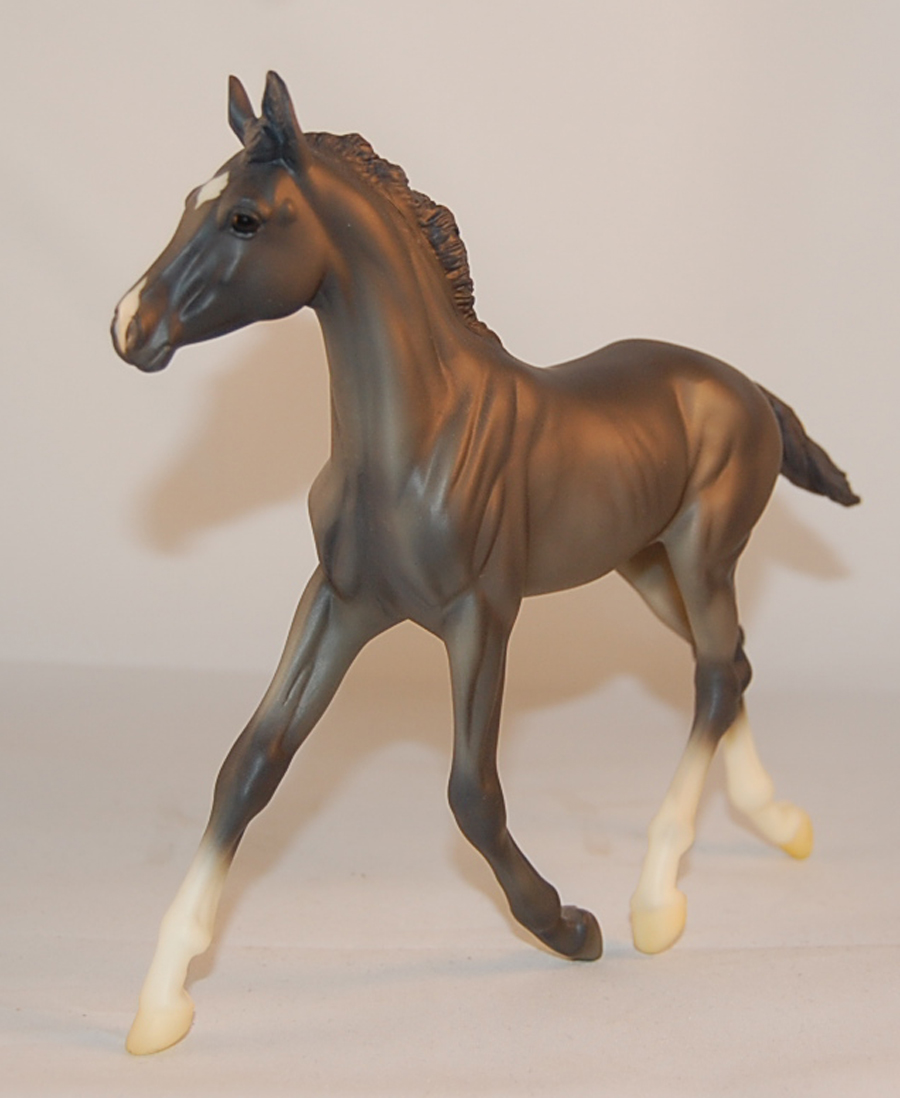 |
| Rolex D, a holsteiner stallion. |
Note the gender
This might be an odd box to check, you might think? But! There are actually some breeds where the gender (especially stallions) limit what color it can be (or have markings) even if it sounds strange. If you don't really care about showing your models this might be one of those boxes you would ignore - BUT - if you show and have a horse with a “non-permitted” color - your horse might be disqualified because of this!
Some examples of Allowed - and Not Allowed colors/markings:
Shire horse: Black, bay. Sooty, flaxen, grey, sabino present. Some bay and black shires can have grey/flaxen hairs in mane/tail. In England blue eyes are not allowed. Chestnut is approved in America while it's not allowed on stallions in England or Sweden. Australia allows chestnuts on geldings. In America there is a line with creme colored horses. Big white spots on the body and a lot of roaning is marked down in the showring.
New Forest pony: Black, chestnut, bay. Grey, creme (not “double” creme) present. Palomino is not allowed on (stud approved) stallions.
Fjord horse: Black, chestnut, bay. ALWAYS in combination with dun. Creme present. Small white markings are allowed on the head (like a small star) but not desired.
A tip on the research of color is to go to the breed society’s page (that you want your model to be) and read on what colors are allowed. If it is a horse that allows other different breeds to be crossed in one can assume (but always double check) that the colors of all breeds used are allowed.
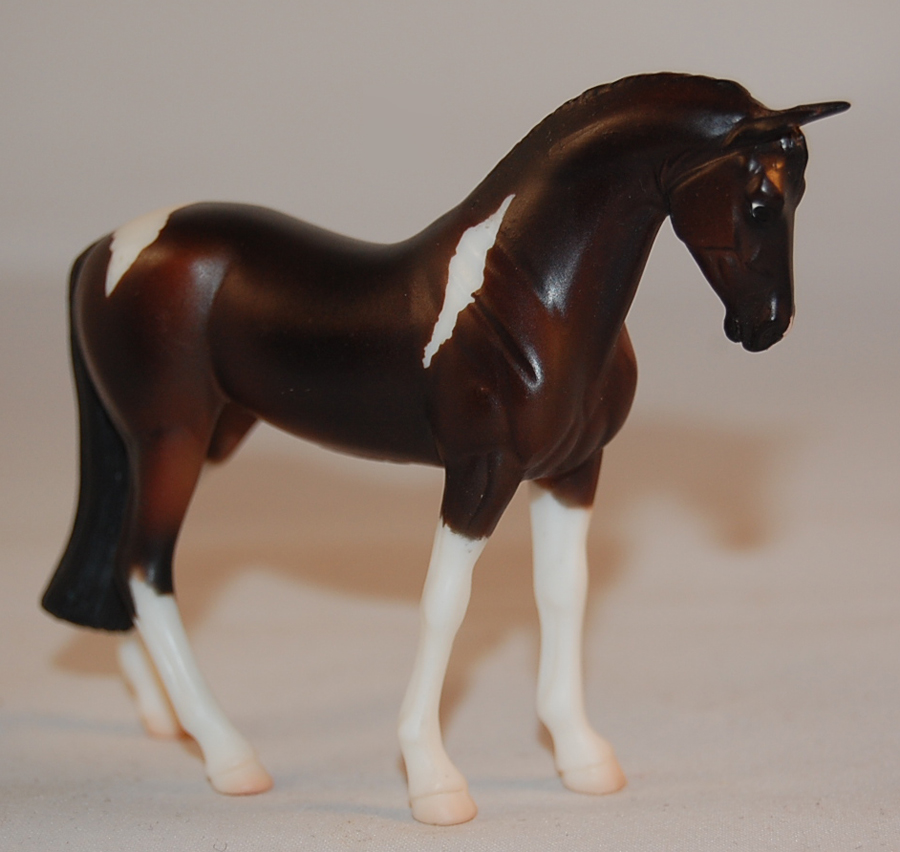 |
| Lady Carrick D, an Irish sporthorse mare. |
Find a sire and a dam
The most common way to start is to simply give your model horse real parents - meaning using real horses as a sire and dam. The most simple way is to look in studbooks (either actual RL ones or online). If you do this you need to look up a few things for it to be as accurate as possible, the most important thing is that both parents need to have been alive at the time when you want your horse to have been born, and that there would have been a chance (even if slim) that the parents could have been bred together. So, no breeding Ruffian to Man o’ War is possible - sorry. The most hardcore even track down a mare's full offspring list to make sure she didn't have a real foal that year, that she was barren or that the real foal died. However, that is not a requirement.
The other way - that is much easier and you don't have to do too much digging - is to look up other people's “Sire and Dam lists” (or S/D-lists). Many times people have a rules section that you should look through, but usually it's a short list that says you shouldn't use the listed horses as parents without permission, real genetic rules should be followed, foals born out of the mares should carry the mare owners stud name and not yours (since you didn't breed it) etc.
Some have a rule that all foals need to have a model body while others are fine with it just being a DO (Details Only, i.e. lacking having a model). Many times we see the perfect match but we have yet to get the perfect model for just that pairing - or we just want that particular bloodline.
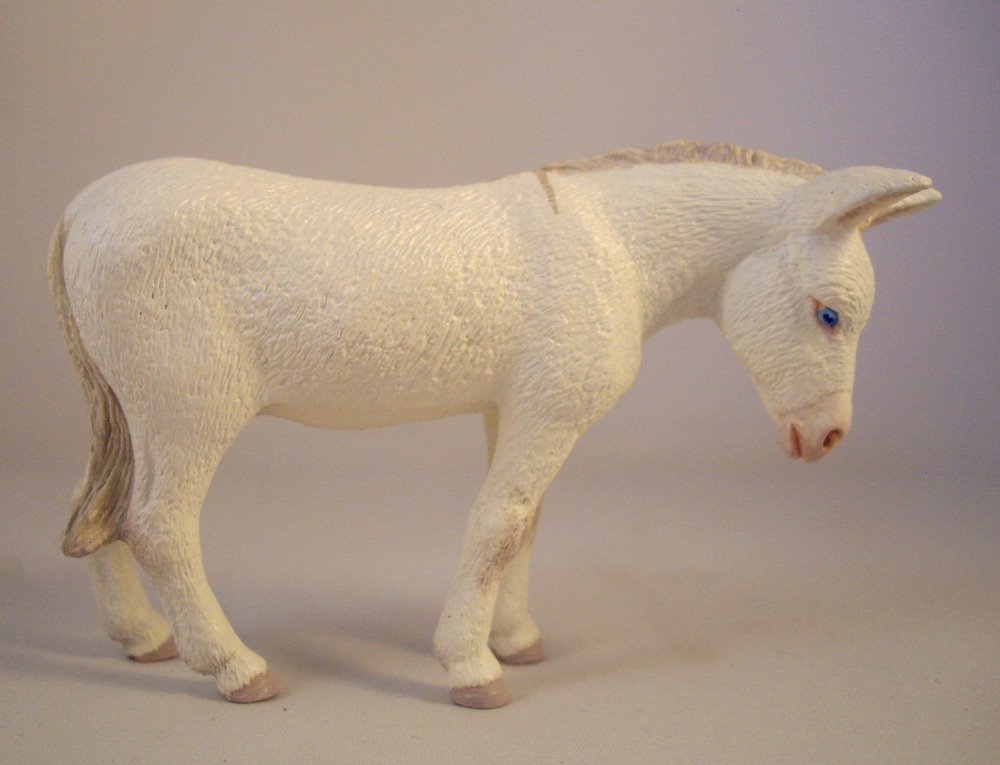 |
| Elvira, an Austrian-Hungarian white baroque donkey jenny. |
Assign age
There is no need to have an actual foal model for the “foal” you create. That is the best part with model horse breeding. Just wave that invisible wand and the “foal” is an adult. You can even do so called “backbreeding” and breeding for a horse born “years back”. There is also something that is called “historical breeding”. Then you often want to bring back a color that due to “fashion” has become what one could call extinct in the breed, such as spotted Lippizaner horses. There was a time when they were both appaloosa spotted and tobiano colored. Even if they don't exist today in the breed, you could still breed the color forward til today. This of course takes good research! To save you some time you can also check what others have when it comes to parents.
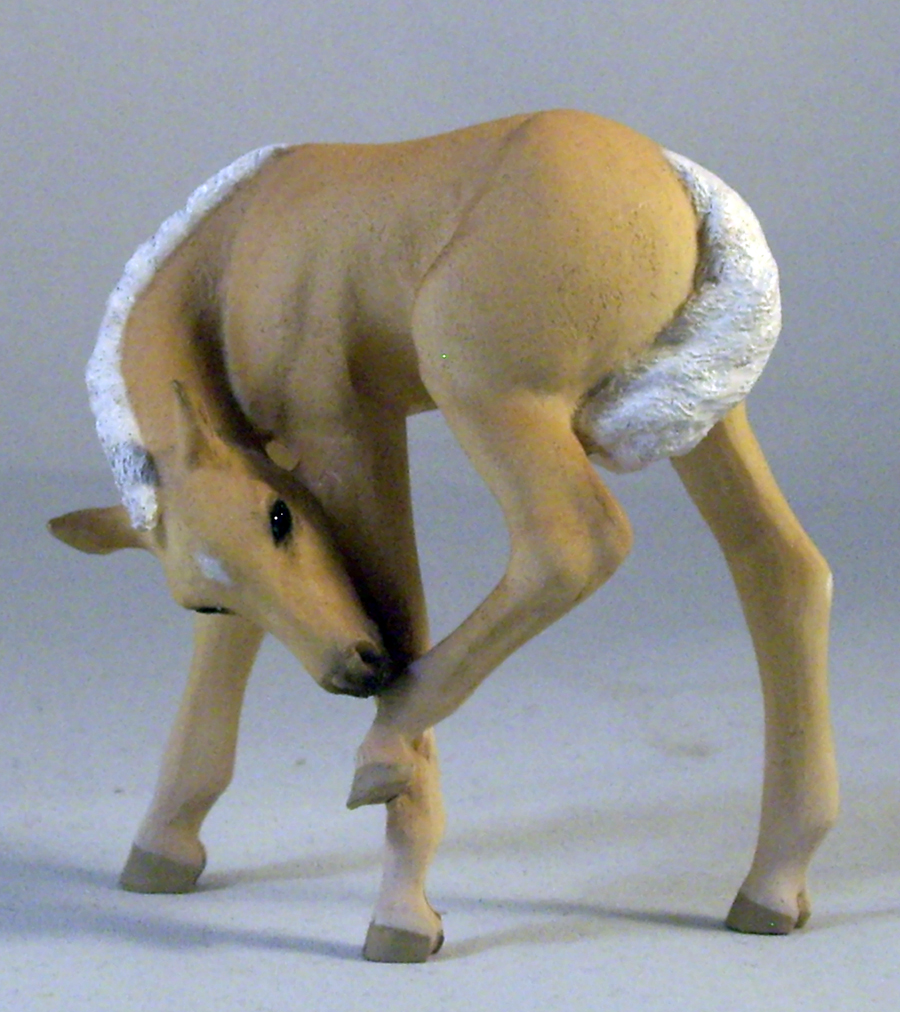 |
| Yvette of Décorima, a Swedish riding pony mare. |
Put a name on it!
The most FUN part in my book! When it comes to my own models and pedigrees I always try to follow if there is a certain name tradition, whether it is to name the foal by the starting letter of sire if it is a colt, and the mothers if it's a filly. Other breeds have a certain naming letter for each year, or a limited number of letters you can use for a name, like for a thoroughbred a name can only be 18 letters including spaces and punctuation marks. Many also suggest naming the horse with names coming from the country of origin. Like the Swedish Gotland pony ‘should’ be given a swedish/scandinavian name to be ‘true’ to the breed. And to bring up the Lippizaner again, they are named by the sireline and then adding the mothers name when it come to stallion, for example this one (that belongs to me):
Conversano V Spectacular (Conversano V Angyl x Spectacular - Pluto Valera IV)
His sire line is called “Conversano V”, his mom is named Spectacular and she is by a stallion from another sire line Pluto Valera IV. His dam was named Valera and probably had more foals by a Pluto line stallion hence the IV in the numbering system.
Following all these different naming traditions are of course NOT a must either, it's entirely up to you but in my eyes it's another thing that makes it more realistic.
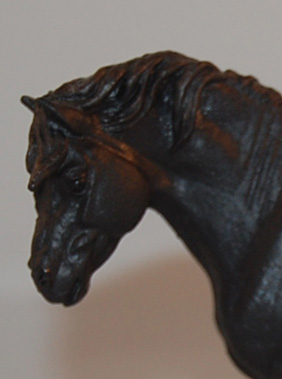 |
| Decorimas Gräll, a Gotland pony stallion. |
Gains - it's not just about the family
So why do you do all this work? I've spent many hours and days doing my research on both the breeds, the colors and the horses within a breed to get the best family tree I can give a piece of plastic. For me, giving your horse a pedigree also gives you an educational link to the real horseworld when it comes to researching famous bloodlines and horse color genetics.
If you want to allow your model horses to be sires or dams, you should first make a list of all the horses that you will be allowing others to use – this is your sire and dam list. On it, you should list the model’s name, its parents (also grandparents if you wish), its age or date foaled, its breed and sex, a description of the model (color, markings, make), and the years you are allowing the model to have foals.
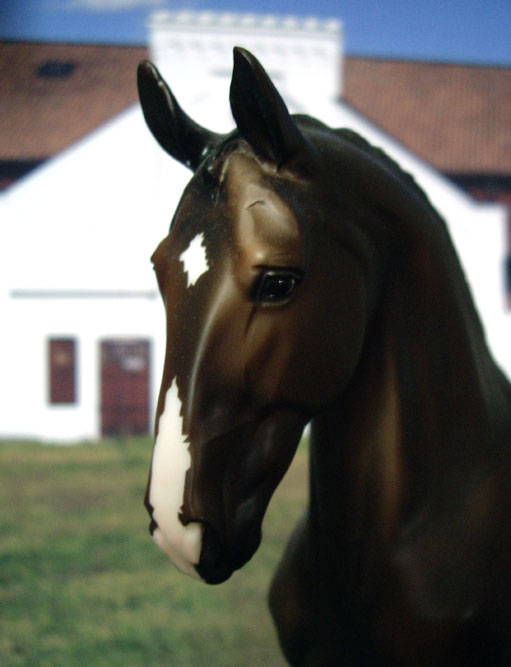 |
| K'awiil D, a Swedish warmblood stallion. |
Why - My own story
Why does one do this? Well, as with many other things you do - the simple answer is that you do it because you enjoy it and think it's fun! Why else would you do something? Not for the sake of someone else at least. It was in a way thanks to pedigree research - but on real horses - that made me come in contact with the model horse hobby in early summer of 2001. I was at first adamant that I was ONLY going to have Swedish warmbloods and Swedish riding ponies. Absolutely NO arabians or thoroughbreds. Yeah... 20 years later I have roughly 34 breeds... and yes... That includes arabians and thoroughbreds. My most recent additions are fantasy horses such as unicorns and pegasi models. And on top of that I also started to make decorators, horses that are perhaps painted in glitter or any other special paint. Fantasy and the so-called decorator models are a whole other story to my collection :)
Pedigree assignment, or model breeding, is not for everybody because it can be very time consuming, but it can definitely add an interesting dimension to the hobby if you choose to do it. I’d be happy to help you out if you have more questions.
Oh - did I tell you how many nice people you come in contact with as well?
